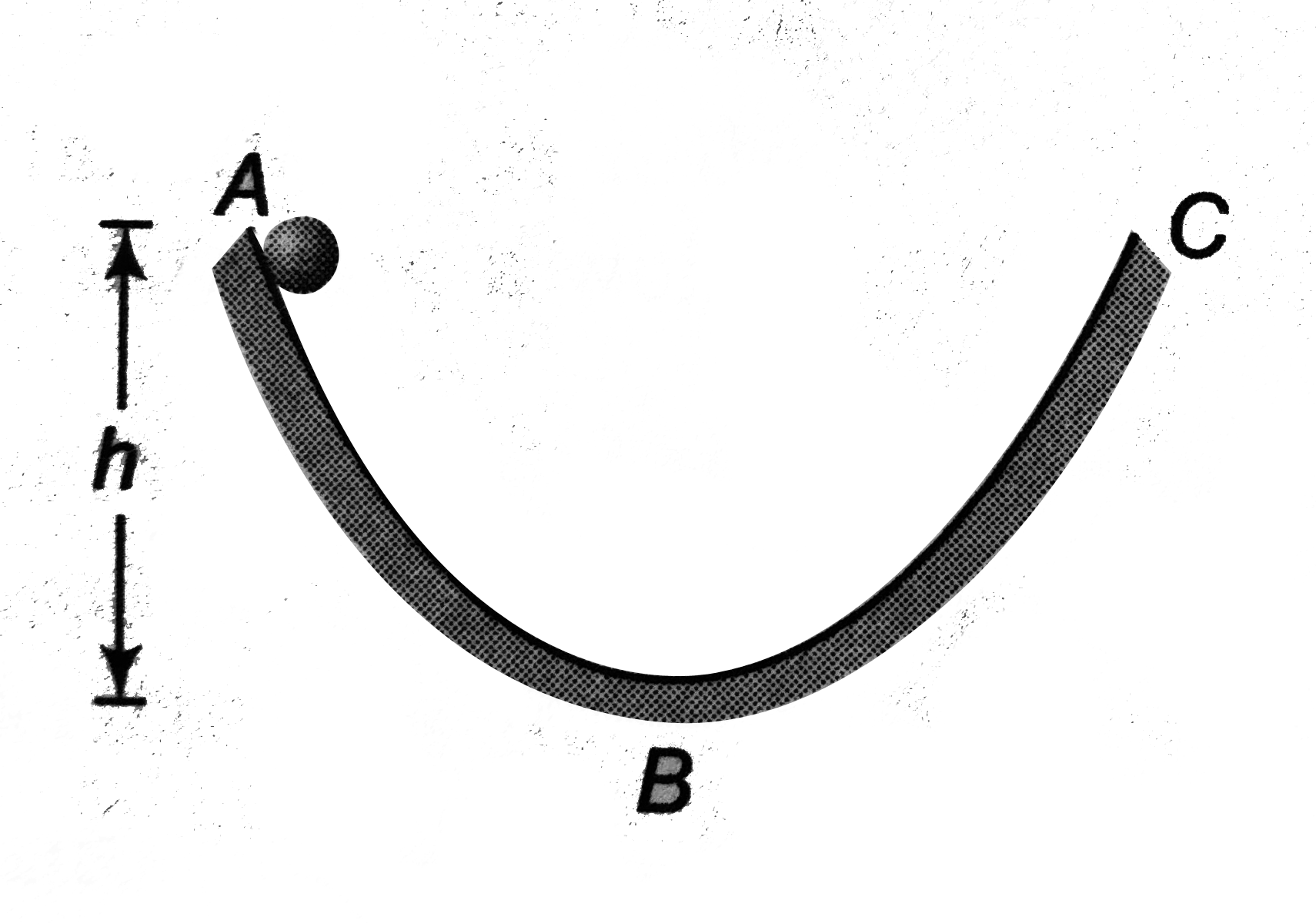
A solid ball rolls down a parabolic path ABC from a height h as shown in figure. Portion AB of the path is rough while BC is smooth. How high will the ball climb in BC?
As path AB is rough, the ball will have both, translational and rotational KE at B.
Applying conservation of mechanical energy between A and B, we have
Loss in PE in going from A to B= Gain in KE of translation + Gain in KE of rotation
mgh=12mυ2+12Iω2
=12mυ2+12(25mr2)ω2
=12mυ2+15mυ2=710mυ2
υ=√10gh7 ..(i)
As the path BC is smooth, at C, there will be no change in rotational KE, but translational KE will become zero.
Applying conservation of mechanical energy between B and C,
mgh'=12mυ2=12m(10gh7)
h'=57h
Topper's Solved these Questions
- SYSTEMS OF PARTICLES AND ROTATIONAL MOTIONBOOK - PRADEEPCHAPTER - SYSTEMS OF PARTICLES AND ROTATIONAL MOTIONEXERCISE - NCERT
21 Videos
- SYSTEMS OF PARTICLES AND ROTATIONAL MOTIONBOOK - PRADEEPCHAPTER - SYSTEMS OF PARTICLES AND ROTATIONAL MOTIONEXERCISE - ADDITIONAL EXERCISES
11 Videos
- SYSTEMS OF PARTICLES AND ROTATIONAL MOTIONBOOK - PRADEEPCHAPTER - SYSTEMS OF PARTICLES AND ROTATIONAL MOTIONEXERCISE - SOLVED EXAMPLES TYPE E
1 Video
- RAY OPTICSBOOK - PRADEEPCHAPTER - RAY OPTICSEXERCISE - Problem For Practice(a)
25 Videos
- THERMODYNAMICSBOOK - PRADEEPCHAPTER - THERMODYNAMICSEXERCISE - Assertion- Reason Type Questions
19 Videos
Similar Questions
A ball is released from height h as shown in fig. Find the condition for the particle to complete the circular path.
View SolutionA smooth ball is released from rest from a height h as shown in figure. It slides down the first inclined plane and collides with the second inclined plane.
a. If e=0, find the speed of the ball just after leaving the inclined plane 1.
b. If the particle mioves horizontally just after the collision find e.
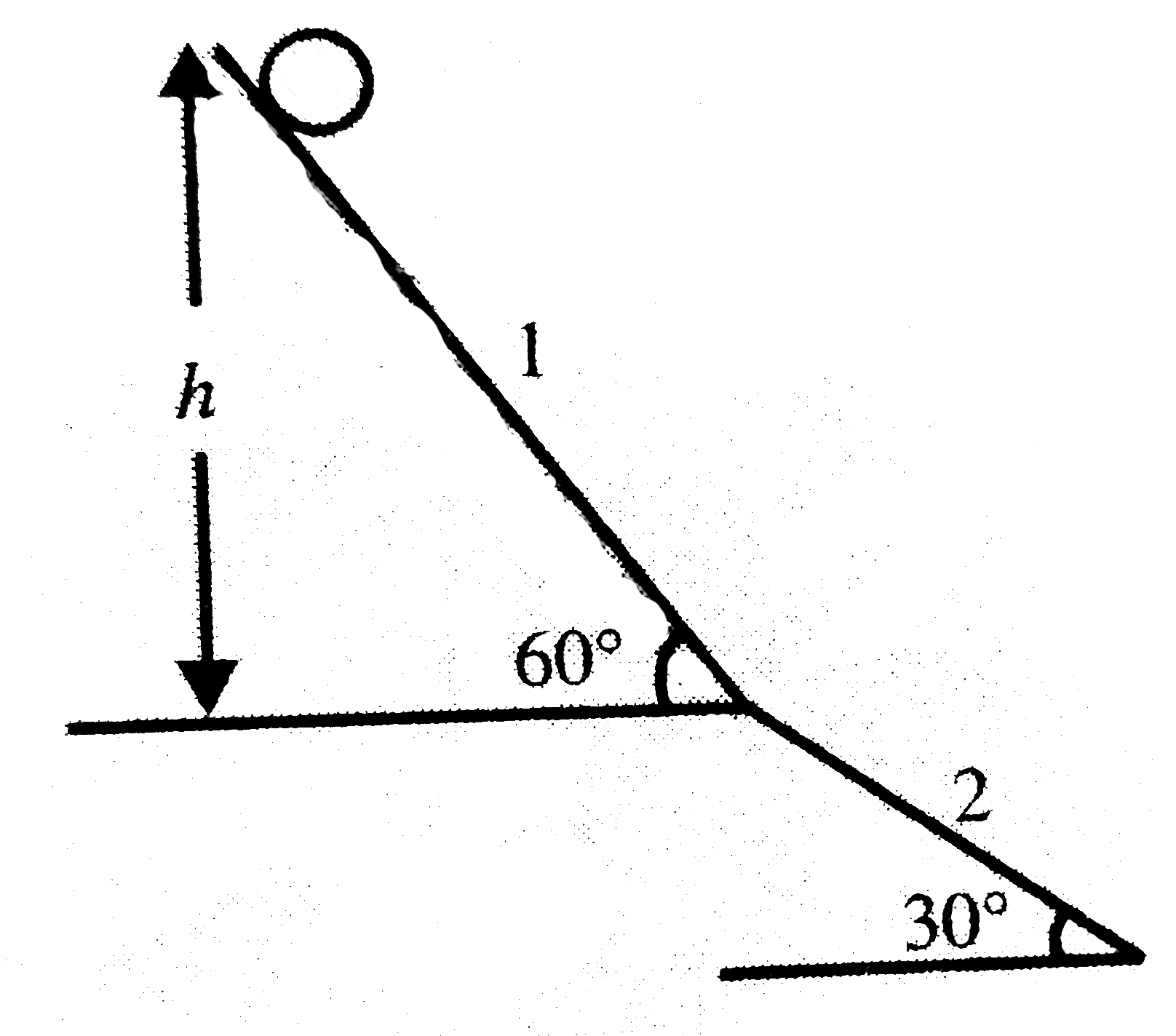
View Solution
Knowledge Check
A small ball is rolled with speed u from point A along a smooth circular track as shown in figure. If x=3R, then
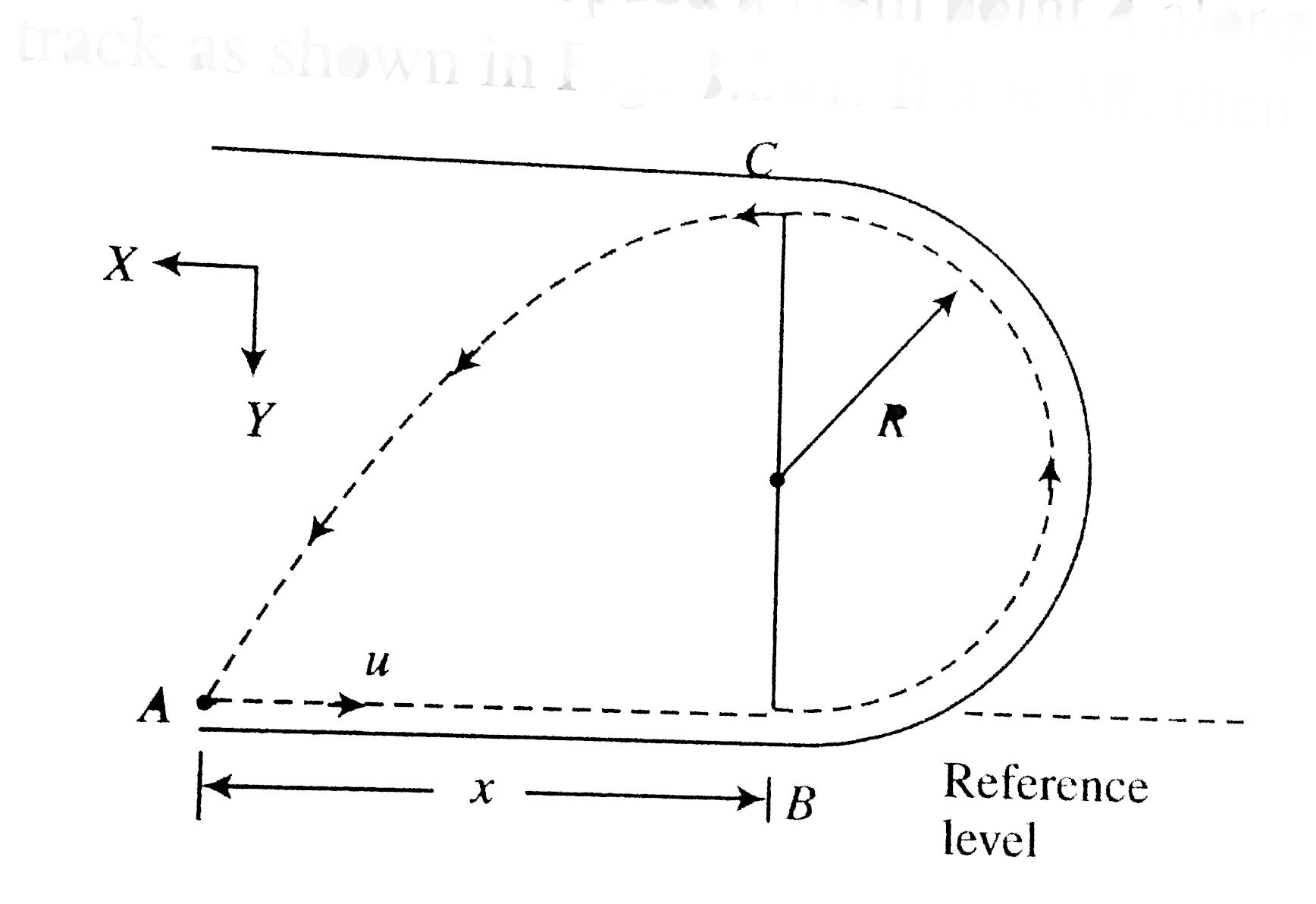
What is the minimum value of x for which the ball can reach the point of projection after reaching C?A2RB5RC3RD52RA solid sphere rolls down a parabolic path , whose vertical dimension is given by y=kx2 and base of the parabola is at x = 0 . During the fall the sphere does not slip, but beyond the base the climb is frictionless. If the sphere falls through a height h, the height above the base that it would climb is
A54B7hC75hD57hA solid sphere rolls down a smooth inclined plane of height h. If it stats from rest then the speed of the sphere when it reaches the bottom is given by
A√ghB√107ghC√47ghD√54gh
A spherical rigid ball is realeased from rest and starts rolling down an inclined plane from height h=7m, as shown in the figure. It hits a block at rest on the horizontal plane (assme elastic collision). If the mass of both the ball and the block is m and the ball is rolling without sliding, then the speed of the block after collision is close to
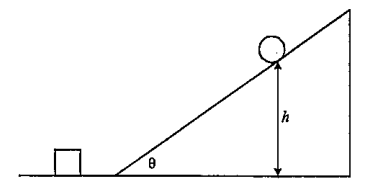
View SolutionA solid sphere is released from rest from height 'h' as shown. Left side track is sufficient rough for pure rolling but another side is smooth as shown in the figure. Find maximum height attain by the sphere on the smooth part of the track.
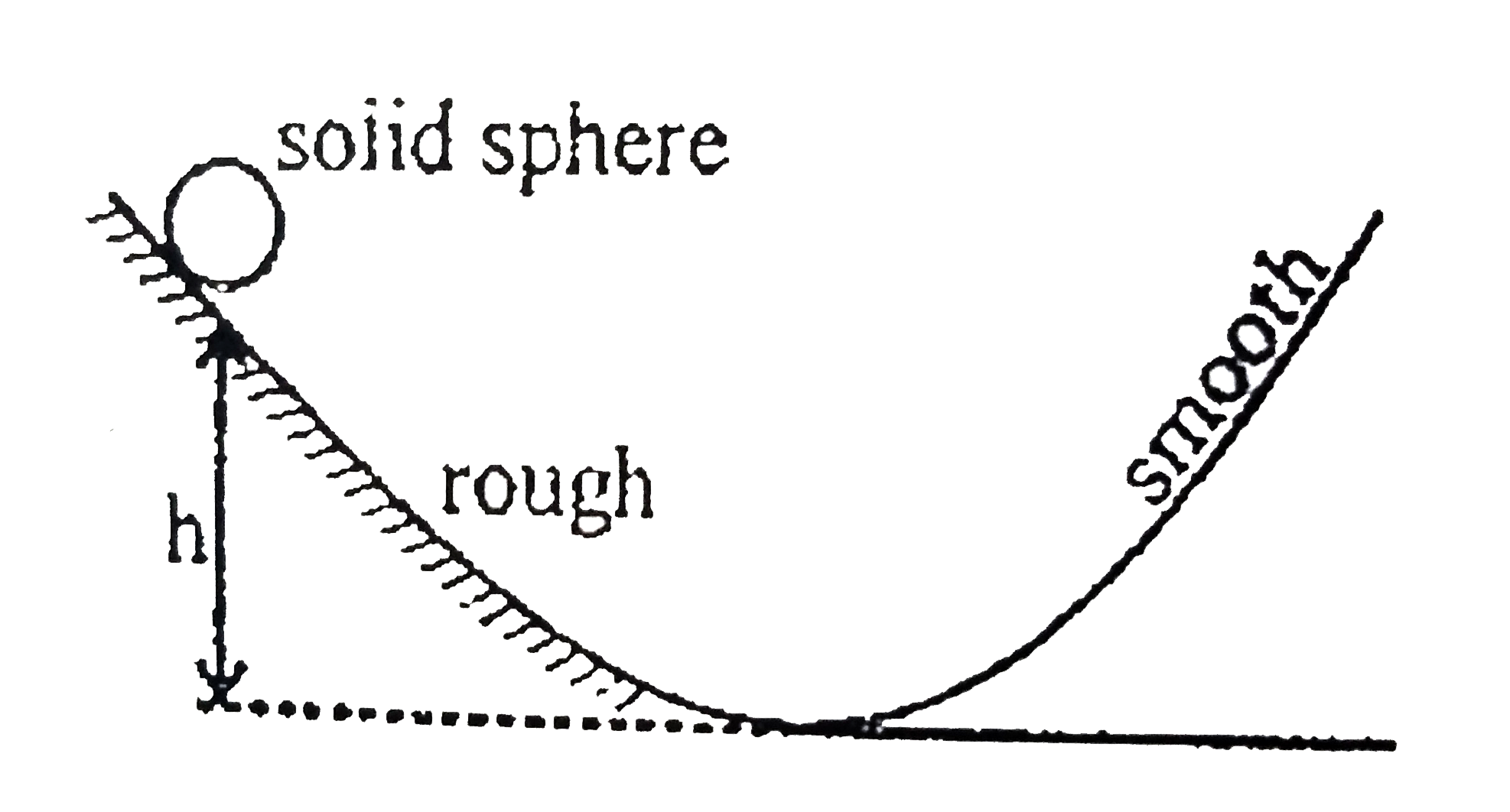
View SolutionA ball of mass m is allowed to roll down the wedge of mass M=2m as shown in the figure. What is the displacement of wedge (in m) when the ball reaches from A to B? Take θ=45∘,h=1m,d=4m
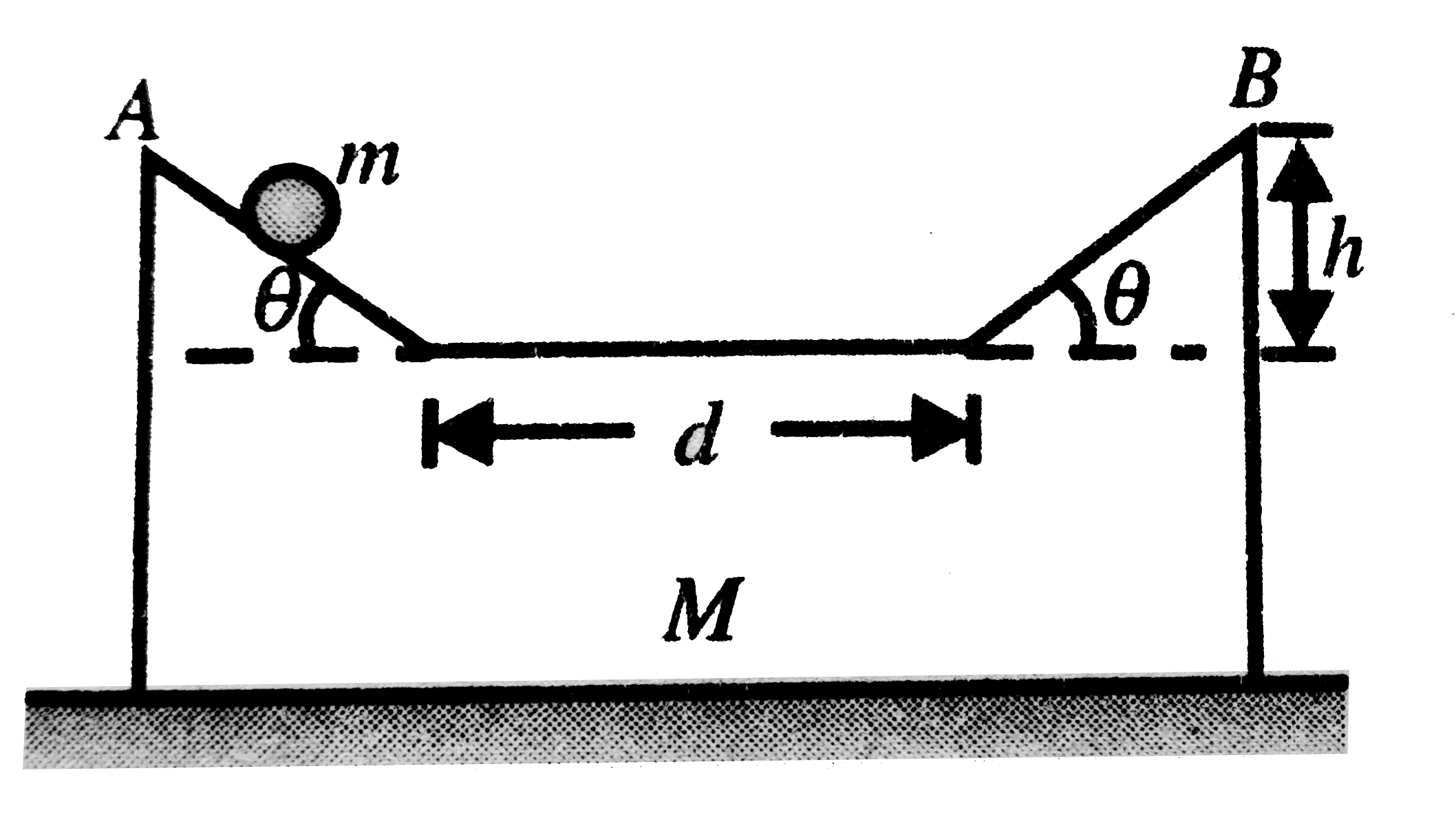
View SolutionA uniform solid spherical ball is rolling down a smooth inclined plane from a height h. The velocity attained by the ball when it reaches the bottom of the inclined plane is v. If the ball is now thrown vertically upwards with the same velocity v, the maximum height to which the ball will rise is
View SolutionA uniform solid spherical ball is rolling down a smooth inclined plane from a height h. The velocity attained by the ball when it reaches the bottom of the inclined plane is v. If the ball is now thrown vertically upwards with the same velocity v, the maximum height to which the ball will rise is
View Solution